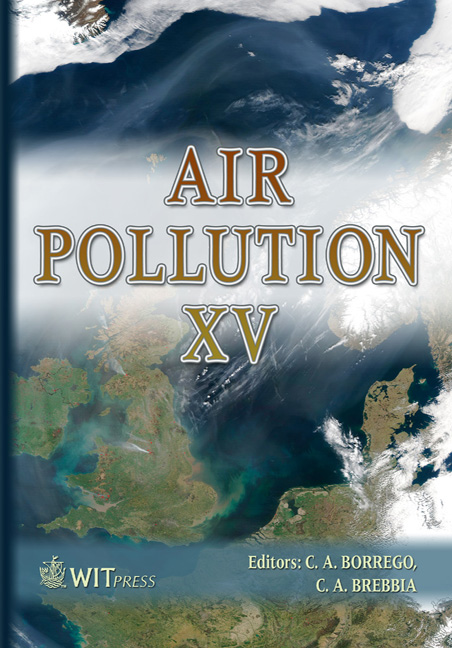Emission Inventory For An Urban Area: Construction And Use
Price
Free (open access)
Transaction
Volume
101
Pages
10
Published
2007
Size
1,196 kb
Paper DOI
10.2495/AIR070231
Copyright
WIT Press
Author(s)
E. Brizio, G. Genon & S. Caon
Abstract
The situation of air pollution due to nitrogen oxides in an urban area of North Italy has been evaluated starting from the definition of emission scenario calculated on the basis of specific localisation of emitting sources, their working regime and emission factors. Afterwards, by using specific atmospheric models suitable to the different sources and localisations, it was possible to evaluate the concentration maps; it was also necessary to consider the presence of a stagnating quantity of pollutants forming a background concentration that has been evaluated by means of experimental data. It was possible to ascertain that the traffic contribution, which by itself is quite important from the point of view of the emissive scenario, is the dominant factor as far as the reduction in air quality is concerned. On the basis of this observation, some traffic limitation interventions have been considered, and it was interesting to establish their contribution on air quality. The methodological path that has been constructed presents a numerical significance that is completely site-specific, but it can also be considered a useful tool for the political authority; in fact, on the basis of the correct knowledge of an emissive scenario and a valid atmospheric model, it is possible to set up proper policies for an air quality improvement. Keywords: traffic, nitrogen oxides, atmospheric model, urban area. 1 Introduction The air pollution situation of many European urban areas does not present indications of any substantial improvements, in spite of the adoption of technological interventions for emission limitations and processes for source reduction (CAFE Programme, 2005); actually, these actions, without other activities, such as a clear understanding of emissive and atmospheric phenomena
Keywords
traffic, nitrogen oxides, atmospheric model, urban area.





